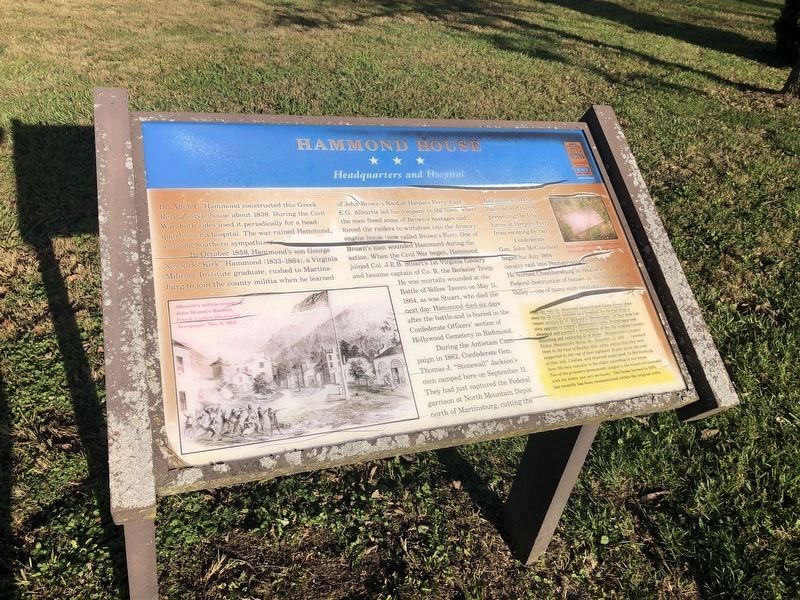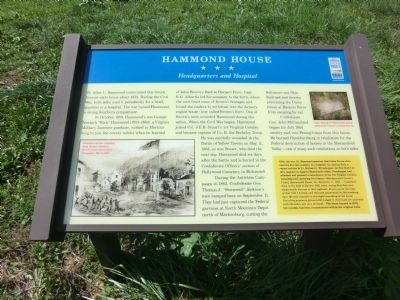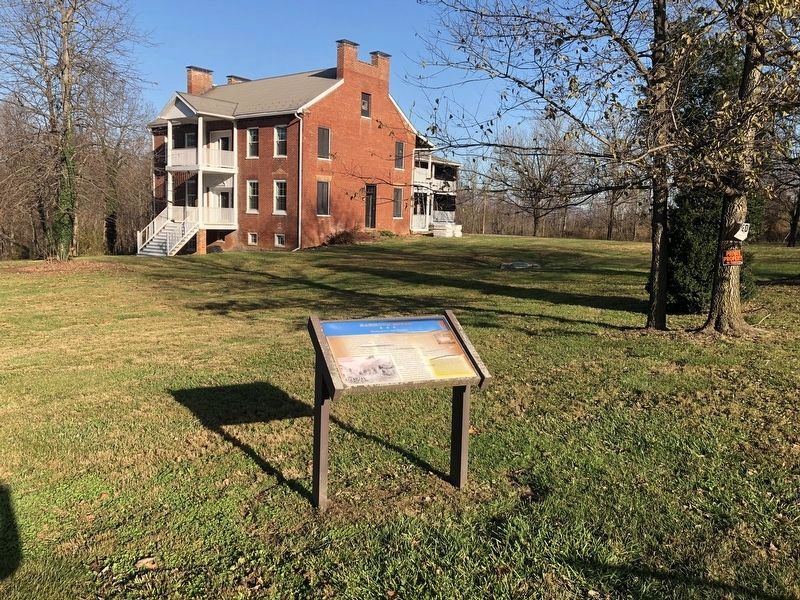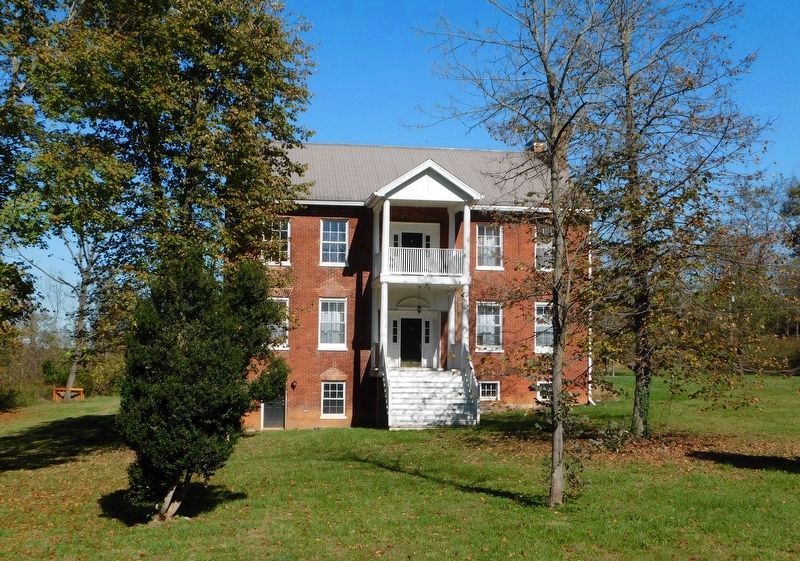Spring Mills in Berkeley County, West Virginia — The American South (Appalachia)
Hammond House
Headquarters and Hospital
Dr. Allen C. Hammond constructed this Greek Revival-style house about 1838. During the Civil War, both sides used it periodically for a headquarters or a hospital. The war ruined Hammond, a strong Southern sympathizer.
In October 1859, Hammond’s son George Newkirk “Kirk” Hammond (1833-1864), a Virginia Military Institute graduate, rushed to Martinsburg to join the county militia when he learned of John Brown’s Raid at Harpers Ferry. Capt E.G. Alburtis led his company to the town, where the men freed some of Brown’s hostages and forced the raiders to withdraw into the Armory engine house (now called Brown’s Fort). One of Brown’s men wounded Hammond during the action. When the Civil War began, Hammond joined Co. J.E.B. Stuart’s 1st Virginia Cavalry and became captain of Co. B, the Berkeley Troop. He was mortally wounded at the Battle of Yellow Tavern on May 11, 1864, as was Stuart, who died the next day. Hammond died six days after the battle and is buried in the Confederate Officers’ section of Hollywood Cemetery in Richmond.
During the Antietam Campaign in 1862, Confederate Gen. Thomas J. “Stonewall” Jackson’s men camped here on September 11. They had just captured the Federal garrison at North Mountain Depot north of Martinsburg, cutting the Baltimore and Ohio Railroad and thereby preventing the Union forces at Harpers Ferry from escaping by rail.
Confederate Gen. John McCausland began his July 1864 cavalry raid into Pennsylvania from this house. He burned Chambersburg in retaliation for the Federal destruction of houses in the Shenandoah Valley—one of many such retaliations on both sides.
After the war, Dr. Hammond asserted that Union forces often used his 22-room mansion as a hospital. An excerpt from a report written by Lt. Richard G. Prendergast, 1st New York Cavalry, appears to support Hammond's claim. Prendergast had attacked and pursued a detachment of the 7th Virginia Cavalry, wounding and capturing 13 of them: "Headquarters Cavalry Picket, Hammond's House, Va., December 11, 1862. … I pursued them to the base of Bunker Hill, when, seeing that they were supported by the rest of that regiment, drawn up on the crest of that hill, I halted, and returned unpursued, by Martinsburg, here. My only casualty is the slight wounding of one horse. Two of the prisoners [presumably lodged in the house] are wounded with the saber, one very seriously." The house burned in 1978, but recently has been reconstructed within the original walls.
Erected by West Virginia Civil War Trails.
Topics and series. This historical marker is listed in these topic lists: Railroads & Streetcars

Photographed By Devry Becker Jones (CC0), November 6, 2020
2. Hammond House Marker
Unfortunately, the marker has weathered significantly.
Location. 39° 33.519′ N, 77° 57.196′ W. Marker is in Spring Mills, West Virginia, in Berkeley County. Marker is on Hammonds Mill Road (West Virginia Route 901) east of Harlan Springs Road (County Route 1), on the right when traveling west. Touch for map. Marker is at or near this postal address: 3706 Hammonds Mill Road, Hedgesville WV 25427, United States of America. Touch for directions.
Other nearby markers. At least 8 other markers are within 3 miles of this marker, measured as the crow flies. Camp Hopkins (approx. 1.7 miles away); Battle of Falling Waters (approx. 2 miles away); Stumpy’s Hollow (approx. 2 miles away); Battle of North Mountain Depot (approx. 2 miles away); 307 North Mary Street (approx. 2.1 miles away); Payne-Kreglow House (approx. 2.1 miles away); 300 North Mary Street (approx. 2.1 miles away); Mt. Zion Episcopal Church (approx. 2.2 miles away).
Credits. This page was last revised on April 8, 2021. It was originally submitted on August 23, 2012, by Don Morfe of Baltimore, Maryland. This page has been viewed 3,133 times since then and 198 times this year. Last updated on August 16, 2020, by Bradley Owen of Morgantown, West Virginia. Photos: 1. submitted on August 23, 2012, by Don Morfe of Baltimore, Maryland. 2, 3. submitted on November 6, 2020, by Devry Becker Jones of Washington, District of Columbia. 4. submitted on April 7, 2021, by Bradley Owen of Morgantown, West Virginia. • Bernard Fisher was the editor who published this page.


